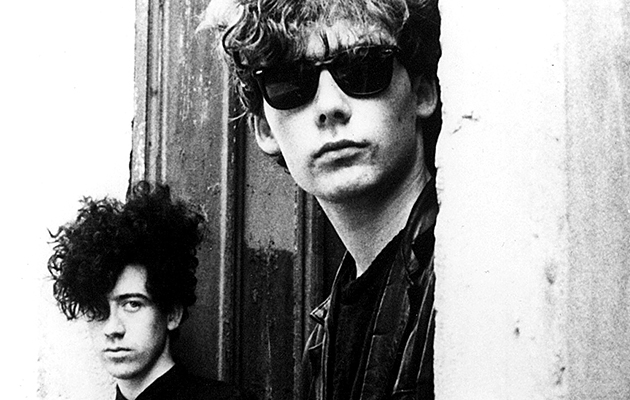Thirty years ago, The Jesus And Mary Chain were smashing up paint factories on acid and plotting their career in an East Kilbride bedroom. Soon, there would be riotous gigs, startling records, leather trousers, animosities and a musical revolution born out of white noise. Now, as they recreate the m...
Understandably, William Reid remembers the riots that took place at Mary Chain shows throughout 1985 as “pretty scary. I had my problems with the whole thing. I thought it was getting out of hand. Somebody was going to get stabbed. People thought we were like thugs. Other thugs thought we were thugs.” Indeed, attracted by the band’s wild reputation, disruptive elements would turn up at their gigs with weapons, smashing up the band’s gear or the venue’s PA. The most famous incidents took place at the North London Poly on March 15, 1985, and Camden’s Electric Ballroom on September 9.
“It came as a shock to London,” says Joe Foster, who was sacked from his job teaching Spanish at the Poly after being misidentified as a ‘ringleader’ of the destruction. “We wanted it to be as shocking as the first five minutes of punk rock and it kind of was.”
“Bobby and I were walking around the Poly before the gig,” recalls Hart. “It had been oversold, so there was an amazing buzz. There were maybe 100 people outside with tickets who couldn’t get in, so we kicked the doors open. But by the time we hit the stage, that atmosphere had become something different. You think, why do people take fucking hammers to gigs, you know? But you’ve got to remember, when we kicked in with the music, it was pretty extreme.”
“There was just chaos surrounding the name of this group,” recalls Rob Dickins, then head of Warner Music, who was taken to the North London Poly show by Geoff Travis. “They played for about 10 minutes, mostly just feedback, then threw down their guitars and left the stage, and people went crazy.”
“The Electric Ballroom was the scariest,” says William. “Security wanted to kick our heads in, and our fans were banging on our dressing room door, also wanting to kick our heads in. The guy hired to keep us safe was spitting at us. They thought we’d created the trouble. In Edinburgh, the bouncers at our own show beat up Jim and McGee.”
“There’s a level of destruction we loved,” explains Hart. “But people were coming for all-out ultraviolence!”
Despite such incidents, Dickins signed the band to Blanco Y Negro – a Warners imprint run by Travis. “A lot of the people there just thought Rob was crazy,” laughs William. “He kind of supported us almost to the end. He was still the devil – but he was the devil you knew.”
The band’s first order of business was to record an album. They’d hated most of their previous recordings – engineers had neutered the Reids’ vision by toning down the sonic terrorism from William’s Shin-Ei fuzz pedal [see sidebar]. However, Travis suggested Crass engineer John Loder, and so the group recorded Psychocandy at Loder’s Southern Studios in Wood Green. “Finding John Loder was like a miracle for us,” explains Jim, “because other people we’d worked with seemed to be like our enemy in the studio. We heard he was a cool guy so we went over, had lunch, played him some records and realised he was our man. He knew exactly what we were doing. It was a breeze.”
“There was a lot of talk about, ‘Oh, this band are just hype, just noise, it’s all about violence’, but we always knew deep down there were a bunch of amazing songs there,” says Hart. “John Loder would set the desk up and leave us to it,” recalls Jim. “If we got into any trouble we’d intercom his office and say, ‘John, come down and help us.’ The control room was in the garage, so we were an actual garage band.”
Ranging from the nihilism of “In A Hole” and “The Living End” to the tender “Just Like Honey”, Psychocandy’s 14 tracks proved the Mary Chain were more than a noisy gimmick. As the Reids had envisaged, it mixed the pop melodies of The Shangri-La’s and T.Rex with the primitive pulse of the Velvets or Suicide, and the assault of The Stooges. In its metallic reverbs and psychedelic overtones, it also conjured up the bad-trip netherworld of the paint factory. “I think Jim and Douglas were smashing up the factory ’cos that was our life,” William suggests. “If you didn’t go to university you’d work in a factory. I don’t think we were trying to glamorise that with the sound of Psychocandy, we were trying to destroy the paint factory.”



